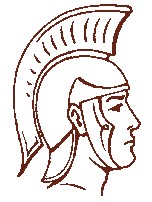

| Savannah Perez & Toni Miranda | Spring 2004 |
| History 1302 | Hines |
Orgins & Founding Fathers: Charlotte, Texas is southwest of San Antonio about 45 miles and it's west of Jourdanton, Texas with a population of 1,700 people. Charlotte was founded in 1910 by Jordan Campbell, T.H. Zanderson. The Atascosa County History book stated that “In 1910 the town site acreage was owned by Jordan Campbell and T.H. Zanderson” (pg.17). Later in the Atascosa County, Deed of records Volume 38 we found out that there were not only two but three founders of Charlotte. The land was on Tobey Ranch which was owned by A.L. Matlock, making him the third founder of Charlotte, Texas.

Historical Landmarks:
HISTORICALLY SIGNIFICANT STORIES?:
Economy:

Connections To Course Themes:
Interview:
A: I was born in West Texas and had
came down for a rodeo and ended up meeting my husband who is from Charlotte.
We had made the decision to raise our family in Charlotte, Texas.
Q: Is Charlotte a town of generations?
A: Charlotte is a town that the young tend to leave,
yet they have a tendency to come back in their later years. Simply because they still
have family living here, and some how everyone seems to be related in a small town like
Charlotte.
Q: What is the worst thing about living in Charlotte?
A: Well… there isn’t anything here, you have
to take a drive to get anywhere.
Q: Do you know of anything interesting for people to coming to Charlotte?
A: Charlotte is a friendly
town,
when I first moved here, and didn’t know anyone a group of people came over and offered assistance to me and all of my family from moving things to making sure my children had a ride to and from school. I liked that very much since now it’s hard to find very friendly people like in the city.
Q: What would you say is the greatest thing about living in Charlotte?
A: I really like the small school environment, they don’t have big classes and your children don’t have to be athletic like in larger schools to get recognized for their hard work.
Q: We know that Charlotte is mostly Hispanic now; Do you find this town to be prejudices?
A: Even though Charlotte has mostly Hispanic people and most have family here, color doesn’t seem to be a barrier and we all seem to get along fine.
Q: What is Charlotte’s main business?
A: Charlotte is a town for hunting and some farming, but mostly for oil production.
Photos:
WEBSITES:
ANNOTATED BIBLIOGRAPHY: